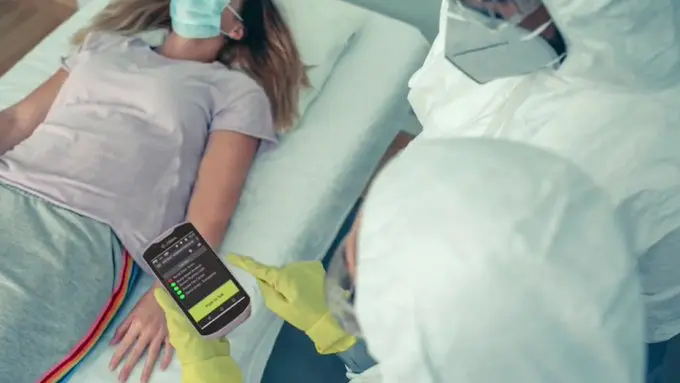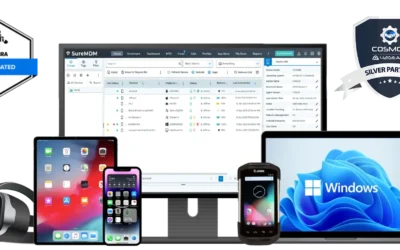Throughout the global COVID-19 pandemic, one of the biggest concerns among public health officials has been that the healthcare system would be overwhelmed by massive patient loads that exceed hospital capacity. In many parts of the USA—including large metro areas, small towns, and rural areas—hospital ICUs have routinely exceeded 100% occupancy during peak periods of infection. Even as vaccination rates climb and the pandemic wanes, many hospitals around the country are still operating at greater than 100% of their normal ICU occupancy.
The stress that the healthcare system has been under during the pandemic has put a spotlight on hospital workflows that help hospitals operate at maximum efficiency and tools that help caregivers ensure the best possible patient outcomes. One fundamental area of focus is patient identification, where modern systems drive high productivity and better accuracy in everything from admissions to medication administration.
In many cases, the basic building block of a successful patient identification system is the humble barcode. As the backbone of a well-designed patient identification system, barcode printers and scanners can help caregivers accomplish critical tasks with far less time and effort, and greatly improved accuracy.
Here’s a brief look at four areas where barcode solutions have helped hospitals keep pace with pandemic-era surges.
Patient Admissions
Every well-engineered patient identification system starts right at the point of admission. Hospital wristbands printed with a barcode at admission can be used to ensure positive patient identification for every interaction. One of the keys to making this a seamless part of healthcare delivery is to ensure the right technology is in place at each admission station. For that, we often recommend a Zebra Wristband Printing solution that combines the reliable healthcare-specific Zebra ZD510-HC printer with easy-to-load cartridges containing Zebra’s Z-Band® wristbands—the only antimicrobial-coated wristbands on the market. This comprehensive solution is proven to increase staff productivity and patient safety.
Patient Bedside
A positive patient identification system can use the barcoded wristband to give caregivers access to the information they need at the point of care and make it easy for medical staff to add information to a patient’s electronic health record (EHR). Nurses and lab technicians can easily print and scan barcode specimen labels at the bedside to increase accuracy for specimen collection tracking and reduce lost samples.
Pharmacy
Using barcodes in pharmacy settings can enhance medication management and streamline pharmacy workflows to make medication administration more efficient and more accurate. Medication errors affect more that 7 million patients in the United States each year[1], and some of those errors occur in pharmacies, so steps like barcoding are essential to providing safer care and reducing risk.
Laboratory
The lab is another area where barcode technology really shines. With a barcoding solution that employs Zebra printers, scanners, and labels, lab technicians are able to dramatically reduce manual data entry errors while increasing their own productivity. Barcodes also make it simple to capture data and link specimen results to the patient’s EHR in real time.
These are just a handful of the many ways that barcode solutions have made an impact on a hospital’s ability to continue delivering excellent care in the face of a dramatic surge in occupancy during the COVID-19 pandemic. MSM and Zebra have a broad range of expertise designing patient identity solutions with barcode technology that uses a connected ecosystem of scanners, printers, and supplies to help ensure patients are connected to the right care at the right time. Contact us today to learn more.
[1] https://www.singlecare.com/blog/news/medication-errors-statistics/


